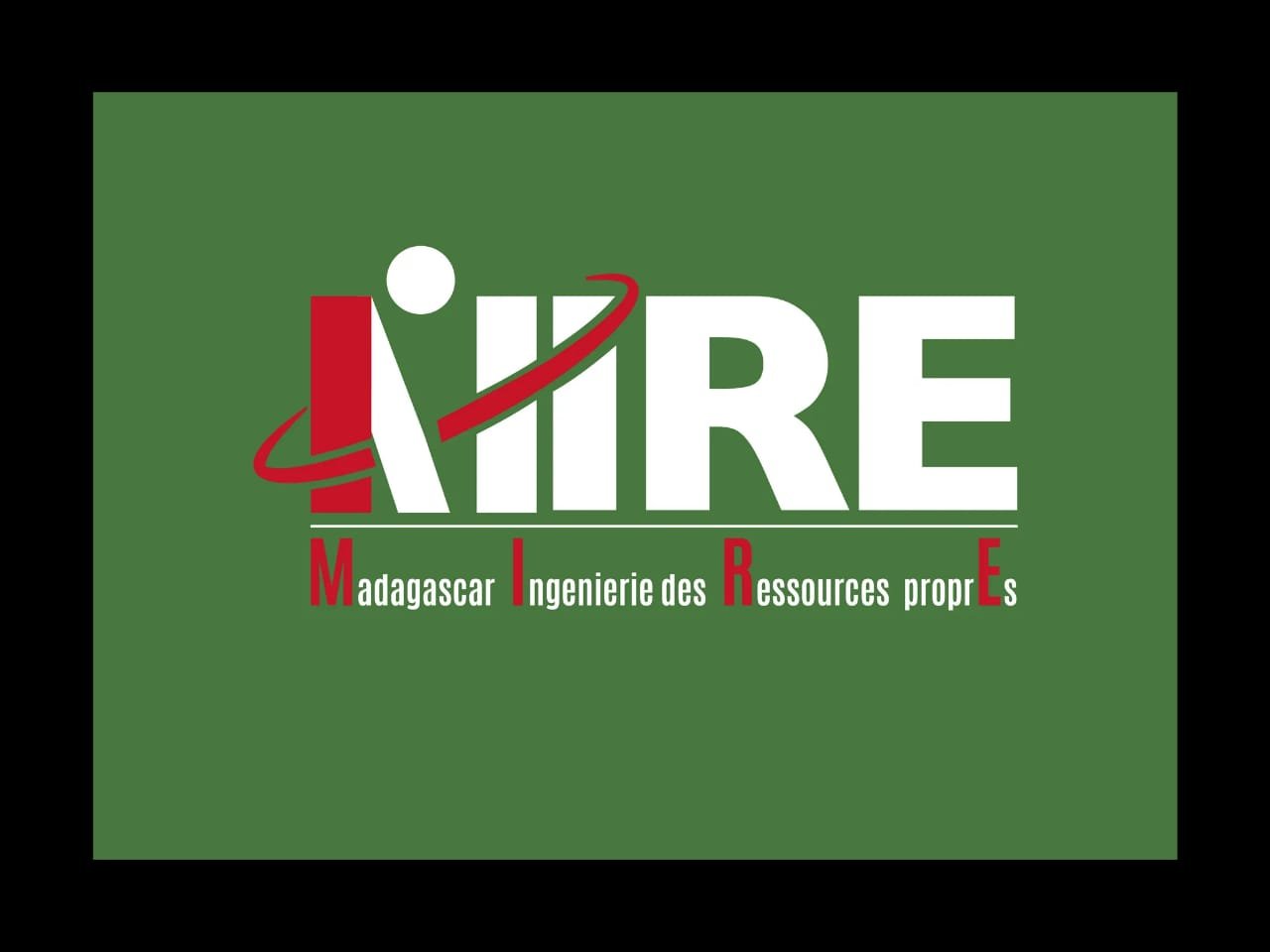Risks and vulnerabilities analysis related to climate change for the Malagasy mining sector
Résumé
Mining projects are subject to serious opposition from both local communities and environmental protection agencies, due to the potential devastation impacts associated with mining. At the end of a mine's life cycle, companies have an obligation to restore the vacant land. However, the mining sector is particularly vulnerable to the consequences of climate change, which can disrupt exploration and exploitation activities, or quite simply prevent the mobility of stakeholders, including staff. The mining sector therefore needs tools to enable it to integrate climate change into the design of structures and the planning of mining activities, hence the proposal for this study entitled the " risks and vulnerabilities analysis related to climate change for the malagasy mining sector ”. The main objective of this work is to identify the main elements of vulnerability to climate change in mining activities in Madagascar. To achieve this, two approaches were explored: the first approach consisted of the synthesis of information to highlight the environmental, socio-economic and institutional factors likely to characterize the state of sensitivity and resilience of mining activity in the face of variability and climate change. The second one focused on the processing of essential information for vulnerability, based on cross-referencing using statistical analysis techniques and the agile and adaptive project management method. The results of this analysis show that the main vulnerabilities of the mining sector in relation to climate change are at the level of site rehabilitation
Project, ecology, evaluation, mitigation, adaptation, resilience
References
[1]- Acclimatise Carbon Disclosure Project Report Global Mining Building Business. (2008). Resilience to Inevitable Climate Change the Adaptation Challenge, Carbon Disclosure Project, Global Mining. Oxford. UK.
[2]- Adger, W.N. (2006). Vulnerability. Glob. Environ. Chang. p 268–281. [Google Scholar] [CrossRef]
[3]- Barros, V.R., Field, C.B., Dokken, D.J., Mastrandrea, M.D., Mach, K.J., Bilir, T.E., Chatterjee, M., Ebi, K.L., Estrada, Y.O., Genova, R.C., et al. (2014). Climate Change 2014: Impacts, Adaptation, and Vulnerability. Part B: Regional Aspects. Contribution of Working group II to the Fifth Assessment Report of the Intergovernmental Panel on Climate Change. Cambridge University Press: Cambridge. UK. New York. NY. USA. p 688. [Google Scholar]
[4]- Becker, A., Inoue, S., Fischer, M., Schwegler, B. (2011). Climate change impacts on international seaports: knowledge, perceptions, and planning efforts among port administrators. Clim. Chang. p 110. 5–29. [Google Scholar] [CrossRef]
[5]- Braham, F. & Seghir, S. 2022. (Mar. 2022).Changement climatique : clivages théoriques et enjeux pratiques, cas de la Tunisie. Revue Internationale du Chercheur.
[6]- Canadian Mining Innovation Council. (2013).Environmental Analysis of the Mining Industry in Canada, Hatch: Vancouver, BC, Canada. [Google Scholar]
[7]- Canadian Standards Association. (2010). Mainstreaming the Risk-Based Management of Climate Change Impacts in Canada: Which Guidance Is Needed? Canadian Standards Association: Ontario, ON, Canada. p 118. [Google Scholar]
[8]- Chen, Y., Liu, R., Barrett, D., Gao, L., Zhou, M., Renzullo, L., Emelyanova, I. (2015). A spatial assessment framework for evaluating flood risk under extreme climates. Sci. Total Environ. p 512-523. [Google Scholar] [CrossRef]
[9]- Corominas, J. , van Westen, C. , Frattini, P. , Cascini, L. , Malet, J.-P. , Fotopoulou, S. , Catani, F. , Eeckhaut, M.V.D. , Mavrouli, Damigos, D. (2012). Monetizing the impacts of climate change on the Greek mining sector. Mitig. Adapt. Strateg. Glob. Chang. p 865–878. [Google Scholar] [CrossRef]
[10]- Diffenbaugh, N.S., Pal, J.S., Giorgi, F., Gao, X. (2007). Heat stress intensification in the Mediterranean climate change hotspot. Geophys. Res. Lett. p 34. [Google Scholar] [CrossRef][Green Version]
[11]- Donque, G. (1975). Contribution Géographique à L’étude du Climat de Madagascar. Ph.D. Thesis. University of Antananarivo. Antananarivo; Madagascar. [Google Scholar]
[12]- Duerden, F., Pearce, T., Ford, J., Pittman, J. (2014). Case Studies of Adaptation to Climate Change in the Yukon Mining Sector: From Planning and Operation to Remediation and Restoration. Natural Resources Canada: Ottawa, ON, Canada.
[13]- Eckstein, D., Hutfils, M.-L., Winges, M. (2018). Global Climate Risk Index 2019. Who Suffers Most from Extreme Weather Events? Weather-Related Loss Events in 2017 and 1998 to 2017. German Watch: Bonn, Germany. [Google Scholar]
[14]- Ford, J.D., Champalle, C., Tudge, P., Riedlsperger, R., Bell, T., Sparling, E. (2014) Evaluating climate change vulnerability assessments: A case study of research focusing on the built environment in northern Canada. Mitig. Adapt. Strateg. Glob. Chang. p 1267-1288. [Google Scholar] [CrossRef]
[15]- Ford, J.D., Pearce, T., Prno, J., Duerden, F., Ford, L.B., Beaumier, M., Smith, T. (2010). Perceptions of climate change risks in primary resource use industries: A survey of the Canadian mining sector. Reg. Environ. Chang. p 65–81. [Google Scholar] [CrossRef]
[16]- Fuchs, S., Birkmann, J., Glade, T. (2012). Vulnerability assessment in natural hazard and risk analysis: current approaches and future challenges. Nat. Hazards. P 1969–1975. [Google Scholar] [CrossRef][Green Version]
[17]- Garcia-Aristizabal, A., Gasparini, P., Uhinga, G. (2015). Multi-risk Assessment as a Tool for Decision-Making. In Urban Vulnerability and Climate change in Africa: A Multidisciplinary Approach. Springer International Publishing: Berlin/Heidelberg. Germany. p 229–258. [Google Scholar]
[18]- Global Reporting Initiative GRI. (2011). Sustainability Reporting Guidelines & Mining and Metals Sector Supplement, Global Reporting Initiative GRI: Amsterdam, The Netherlands. [Google Scholar]
[19]- Gormley, A., Pollard, S., Rocks, S., Black, E. (2011). Guidelines for Environmental Risk Assessment and Management UK Climate Change Risk Assessment 2017. Collaborative Centre of Excellence in Understanding and Managing Natural and Environmental Risks, Cranfeld University and Department for Environment, Food and Rural Affairs: Bedfordshire/London, UK. [Google Scholar]
[20]- Government of Madagascar. (2015). Evaluation de la Vulnérabilité et de L’adaptation du Secteur Santé au Changement climatique à Madagascar. Unpublished work. [Google Scholar]
[21]- Grossman, D. (2012). Physical Risks from Climate Change: A Guide for Companies and Investors on Disclosure and Management of Climate Impacts, Oxfam America: Boston, MA, USA. [Google Scholar]
[22]- Hodgkinson, J., Littleboy, A., Howden, M., Moffat, K., Loechel, B. (2010). Climate Adaptation in the Australian Mining and Exploration Industries, CSIRO: Clayton South Vic, Australia,.ISBN 978-1-921605-81-9.
[23]- Hodgkinson, J.H., Hobday, A.J., Pinkard, E.A. (2014). Climate adaptation in Australia’s resource-extraction industries: Ready or not? Reg. Environ. Chang. 14. 1663–1678. [Google Scholar] [CrossRef]
[24]- Hodgkinson, J.H., Smith, M.H. (2018). Climate change and sustainability as drivers for the next mining and metals boom: The need for climate-smart mining and recycling. Resour. Policy , in press. [Google Scholar]
[25]- Hwacha, V. (2005). Canada’s Experience in Developing a National Disaster Mitigation Strategy: A Deliberative Dialogue Approach. Mitig. Adapt. Strateg. Glob. Chang. , 10, 507–523. [Google Scholar] [CrossRef]
[26]- Institut National de la Statistique (INSTAT). (accessed on 1 August 2023). ICF Macro. Enquête Démographique et de Santé de Madagascar 2008–2009. Available online: https://www.dhsprogram.com/pubs/pdf/FR236/FR236.pdf
[27]- International Council on Mining & Metals ICMM. (2013). Adapting to a changing climate: implications for the mining and metals industry. In Climate Change. International Council on Mining & Metals ICMM: London, UK. p 62. [Google Scholar]
[28]- Field, C.B., Barros, V., Dokken, D., Mach, K.J., Mastrandrea, M.D, Bilir, E., Chatterjee, M., Ebi, K., Estrada, O.Y., Genova, R., et al. (2014). Climate Change 2014: Impacts, Adaptation, and Vulnerability. IPCC. Cambridge University Press: Cambridge, UK. ISBN 978-1-107-64165-5. [Google Scholar]
[29]- Joint Australian New Zealand Standard ISO 31000:2009. (2009). Risk Management Principles and Guidelines, Standards Australia, Sydney and Standards New Zealand: Wellington, New Zealand.
[30]- Kent, A., Johnson, B. (1993). Risk Based Evaluation of Mine Waste Dumps, The Technical and Research Committee on Reclamation: Port Hardy. BC. Canada. p 11. [Google Scholar]
[31]- Kong, J., Pei, Z., Du, M., Sun, G., Zhang, X. (2014). Effects of arbuscularmycorrhizal fungi on the drought resistance of the mining area repair plant Sainfoin. Int. J. Min. Sci. Technol. 24. 485–489. [Google Scholar] [CrossRef]
[32]- Landis, W.G., Durda, J.L., Brooks, M.L., Chapman, P.M., Menzie, C.A., Stahl, R.G., Stauber, J.L. (2013). Ecological risk assessment in the context of global climate change. Environ. Toxicol. Chem. 32. 79–92. [Google Scholar] [CrossRef] [PubMed]
[33]- Lemmen, D.S., Warren, F.J., Lacroix, J., Bush, E. (Eds.). (2008). From Impacts to adaptation. Canada in a Changing Climate 2007, Government of Canada. Ottawa, ON, Canada.
[34]- Loechel, B., Hodgkinson, J., Moffat, K. (2013). Climate change adaptation in Australian mining communities: comparing mining company and local government views and activities. Clim. Chang. 119. 465–477. [Google Scholar] [CrossRef]
[35]- Mason, L., Giurco, D. (2013). Climate Change Adaptation for Australian Minerals Industry Professionals, National Climate Change Adaptation Research Facility: Gold Coast, Australia. ISBN 978-1-925039-25-2. [Google Scholar]
[36]- Mason, L., Unger, C., Lederwasch, A., Razian, H., Wynne, L., Giurco, D. (2013). Adapting to Climate Risks and Extreme Weather: A Guide for Mining and Minerals Industry Professionals. National Climate Change Adaptation Research Facility: Southport, Australia. ISBN 978-1-925039-24-5. [Google Scholar]
[37]- Metzger, M.J., Leemans, R., Schröter, D. (2005). A multidisciplinary multi-scale framework for assessing vulnerabilities to global change. Int. J. Appl. Earth Obs. Geoinf. 7. 253–267. [Google Scholar] [CrossRef]
[38]- National Bureau of Catastrophic Risk Management (BNGRC). (accessed on July 2023). Plan de Contingence National 2010-2011 : Cyclones et Inondation. Available online: https://reliefweb.int/sites/reliefweb.int/files/resources/F4075FC9B5EF07778525783A00567EBE-Rapport_complet.pdf
[39]- National Bureau of Catastrophic Risk Management and United Nations Development Programme (BNGRC & UNDP). (accessed on July 2023).Plan de relèvement et de résilience pour les districts les plus affectés par la sécheresse déclenchée par El Niño dans le Grand Sud de Madagascar. Available online: http://www.mg.undp.org/content/madagascar/fr/home/library/crisis_prevention_and_recovery/publication_1.html
[40]- Nelson, J., Schuchard, R. (2011). Adapting to Climate Change: A Guide for the Mining Industry. BSR. New York. NY. USA. p 10. [Google Scholar]
[41]- Odell, S.D., Bebbington, A., Frey, K.E. (2018). Mining and climate change: A review and framework for analysis. Extr. Ind. Soc. 5. 201–214. [Google Scholar] [CrossRef]
[42]- Pearce, T., Ford, J.D., Prno, J., Duerden, F. (2009). Climate Change and Canadian Mining: Opportunities for Adaptation. David Suzuki Foundation. Vancouver. BC. Canada. p. 160. [Google Scholar]
[43]- Pollino, C.A., Hart, B.T., Bolton, B.R. (2008). Modelling ecological risks from mining activities in a tropical system. Australas. J. Ecotoxicol. p 119. [Google Scholar]
[44]- Prior, E., Wilkins, C., Jansen, H.R., Sainsbury, C., Hill, J.H., Seleznev, M., Urquia, R.P. (2007). Global Mining: Physical Impacts of Climate Change on 12 Major Mines. Citigroup. Sydney. Australia. p 24. [Google Scholar]
[45]- Rakotomavo, Z.A.P.H. , Rajaonarivony, R. (2015). Les Tendances Observées et les Futurs Changements Climatiques à Madagascar. Rapport Technique Interne Direction des Recherches et Développement/Direction Générale de la Météorologie. Antananarivo. Madagascar. Unpublishedwork. [Google Scholar]
[46]- Ratsimamanga, A. , Bettencourt, S. (accessed on July 2023). La Gestion des Risques Naturels à Madagascar. Personal Communication. Available online: https://slideplayer.fr/slide/5486905/
[47]- Rayne, S., Forest, K., Friesen, K.J. (2009). Analytical Framework for a Risk-based Estimation of Climate Change Effects on Mine Site Runoff Water Quality. Mine Water Environ. 28. 124–135. [Google Scholar] [CrossRef]
[48]- Rodgers, C., Eng, S., Douglas, A., Sparling, E., Byer, P., Auld, H. (2014). Assessing the Treatment of Climate Change Impacts and Adaptation in Project-Level Eas in the Canadian Mining Sector, Ontario Centre for Climate Impacts and Adaptations Resources (OCCIAR) and Risk Sciences International (RSI). Sudbury/Ottawa. ON. Canada. p. 86. [Google Scholar]
[49]- Sharma, V., Franks, D.M. (2013). In Situ Adaptation to Climatic Change: Mineral Industry Responses to Extreme Flooding Events in Queensland, Australia. Soc. Nat. Resour. 26. 1252–1267. [Google Scholar] [CrossRef]
[50]- Sharma, V., van de Graaff, S., Loechel, B., Franks, D. (2013). Extractive Resource Development in a Changing Climate: Learning the Lessons from Extreme Weather Events in Queensland, Australia, National Climate Change Adaptation Research Facility: Gold Coast, Australia. p 110. [Google Scholar]
[51]- Smit, B., Wandel, J. (2006). Adaptation, adaptive capacity and vulnerability. Glob. Environ. Chang. 16. 282–292. [Google Scholar] [CrossRef]
[52]- United Nations Framework Convention on Climate Change (UNFCCC). (2004). Application of Methods and Tools for Assessing Impacts and Vulnerability, and Developing Adaptation Responses, UNFCCC Secretariat: Rio de Janeiro, Brazil. [Google Scholar]
[53]- World Bank. Opportunities and Challenges for Inclusive and Resilient Growth: Compendium of Policy Notes for Madagascar. (accessed on July 2023). Available online: http://documents.worldbank.org/curated/en/130911468086644653/Opportunites-et-defis-pour-une-croissance-inclusive-et-resiliente-recueil-de-notes-de-politique-pour-Madagascar
[54]- World Health Organization. Protecting Health from Climate Change: Vulnerability and Adaptation Assessment. (accessed on July 2023). Available online: http://www.who.int/globalchange/publications/vulnerability-adaptation/en/
[55]- World Health Organization/United Nations Framework Convention on Climate Change. Climate and Health Country Profile: Madagascar. (accessed on August 2023). Available online: http://apps.who.int/iris/bitstream/handle/10665/246140/WHO-FWC-PHE-EPE-15.40-eng.pdf,jsessionid=B8376C8A12D5A12D8CBB47DBA9E754A5?sequence=1
[56]- Yumul, G.P., Cruz, N.A., Servando, N.T., Dimalanta, C.B. (2011). Extreme weather events and related disasters in the Philippines, 2004–08: a sign of what climate change will mean? Disasters 35. 362–382. [Google Scholar] [CrossRef] [PubMed]


